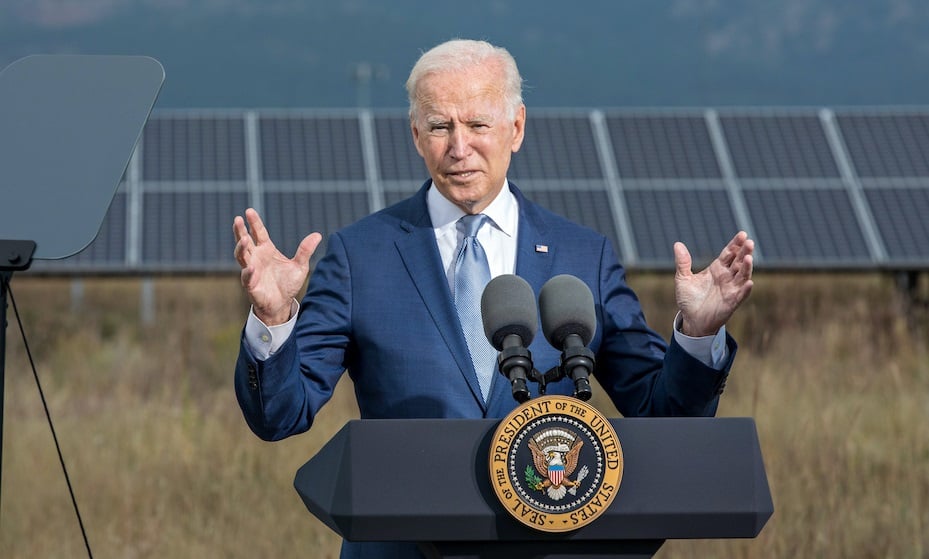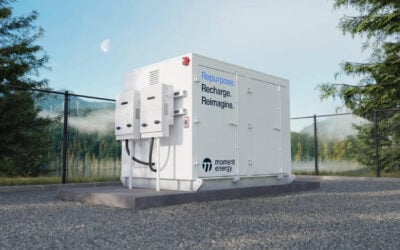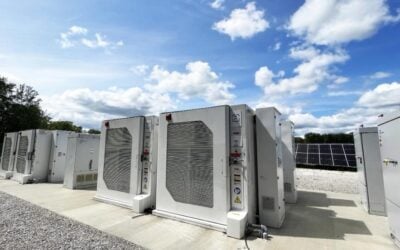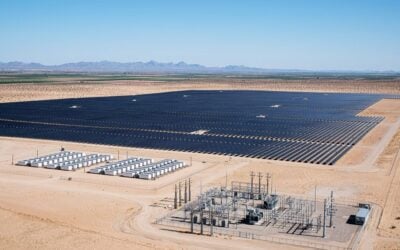
Actions taken this month by the US government to support the country’s solar industry are unlikely to come at the expense of support for energy storage, Energy-Storage.news has heard.
On 6 June, President Joe Biden announced a two-year waiver on tariffs for solar modules imported from Southeast Asia, even as an investigation is ongoing by the Department of Commerce into whether facilities in the region are being used by manufacturers to circumvent duties on imports from China.
Enjoy 12 months of exclusive analysis
- Regular insight and analysis of the industry’s biggest developments
- In-depth interviews with the industry’s leading figures
- Annual digital subscription to the PV Tech Power journal
- Discounts on Solar Media’s portfolio of events, in-person and virtual
As reported by our colleagues at PV Tech, the decision has been widely welcomed by the downstream US solar industry, which accounts for the vast majority of jobs and economic activity in the sector, versus the upstream, which includes just a handful of domestic makers.
Abigail Ross Hopper, executive director of the Solar Energy Industries Association (SEIA) said the move would restore the “paralysed” market.
At the same time, Biden moved to support domestic manufacturing through invocation of the Defense Production Act (DPA), Cold War-era legislation which allows the government to place manufacturing and production on a footing similar to that required for a war effort or national emergency.
Although earlier in the year Biden had already said the DPA would be used to support battery manufacturing value chains, in this most recent announcement, five “critical” clean energy technologies were mentioned by name: solar module parts, building insulation, heat pumps, equipment for making clean fuels such as electrolysers and fuel cells and finally power grid infrastructure such as transformers.
Energy storage was left out of the announcement, but that doesn’t mean the government won’t use the DPA to support batteries and other technologies after all, Jason Burwen of the American Clean Power Association (ACP) said.
“Although battery energy storage was not included in the DPA Title III declaration by the White House, it’s important to recognise that the bipartisan infrastructure legislation Congress passed last year appropriated US$3 billion for battery manufacturing investments and US$3 billion for battery minerals processing and recycling,” Burwen, ACP’s VP for energy storage, said.
“That’s among the largest direct investments the US government has ever made in a clean energy supply chain, and it represent funds actually available today.”
Burwen noted that the DPA funding on the other hand still needs to be appropriated via Congressional approval, for both the most recent declaration and the DPA declaration around batteries made in March.
‘Energy storage still remains part of the larger picture’
Morten Lund, a partner at law firm Stoel Rives assisting energy project developers, said that solving the solar tariff issue was simply the more pressing priority for the president.
The so-called anti-dumping and countervailing duties (AD/CVD) imposed on the industry had led research firm BloombergNEF to slash its US solar deployment forecast for 2022 from 30.5GW to 22.7GW and came about as the result of complaints by a group of mostly-anonymous US-based manufacturers led by California-headquartered outfit Auxin.
“I don’t believe that storage was intentionally excluded so much as the White House was targeting a specific issue—the potential Auxin tariffs.”
Biden’s imposition of a two-year tariff freeze being paired with support for domestic makers via the DPA, addresses concerns that the continued import of solar – and other clean energy – goods would harm local suppliers, Lund said.
The lawyer believes energy storage remains “part of the larger plan,” but the key priority at this stage is getting solar deployment back up on its feet.
Jason Burwen noted that the US Department of Energy already has its first solicitation out for battery manufacturing grants, which ACP thinks should accelerate development of a domestic battery supply chain.
“Additionally, other agencies like DOE’s Loan Programs Office have authority to invest in the battery supply chain, and we are eager to see how it may use its authority.”
For ACP and its members, it is important to take a “multi-faceted and comprehensive approach to accelerating US storage,” and as with one of its predecessor organisations, the Energy Storage Association, the trade group continues to advocate for the investment tax credit (ITC) for standalone energy storage deployment as well as tax credits for domestic manufacturers, Burwen said.
Previous forecasting by Wood Mackenzie Power & Renewables has found the ITC could result in an estimated uplift of more than 20% to annual energy storage deployments in the US.
Back in April, as the DPA Title III declaration to support critical battery minerals and materials processing and production was made, several industry participants and experts told this site the move was a positive one.
However, there still remains a huge mountain to climb in terms of making the US less dependent on imported materials and processing capability it had gradually outsourced abroad, Dr Francis Wang, CEO of advanced battery tech company Nanograf said.
Danny Lu, VP of energy storage manufacturer Powin Energy pointed out the lengthy timelines for getting upstream production to market and said it will be important to offer specific support directed at stationary storage batteries, as well as for electric vehicles (EVs).
Caspar Rawles, chief data officer at lithium battery market information provider Benchmark Mineral Intelligence said that permitting new upstream resources is usually the biggest hindrance to getting them online quickly. Rawles noted the President’s order expressly stated the government would not intervene to expedite permitting.
The problem-solving “really needs to accelerate things because the problem is here now — it’s not five years down the road, it’s here today and it’s going to continue to grow from here,” Rawles said.






